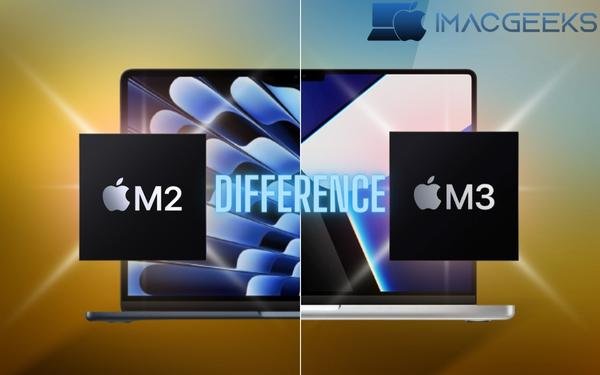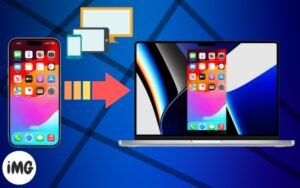The M3 MacBook Pros are now available, and with its new 3nm chips—which appear to represent yet another paradigm breakthrough in computing—Apple has once again completely outperformed its competitors. But this begs the question: Should you replace your old MacBook Pro with the newest M3 model? In this thorough comparison of the M3 and M2 MacBook Pros, let’s find out.
Key specs of the MacBook Pro M3 and M2
Before we go into the specifics, let’s review what these four powerful Macs have to offer.
| Specifications | 14-inch M3 MacBook Pro | 14-inch M2 MacBook Pro | 16-inch M3 MacBook Pro | 16-inch M2 MacBook Pro |
| Starting price | $1,599 | $1,999 | $2,499 | $2,499 |
| Display and resolution | 14.2-inch 120Hz XDR 3456 x 2234 | 14.2-inch 120Hz XDR 3456 x 2234 | 16.2-inch 120HZ XDR 3456 x 2234 | 16.2-inch 120Hz XDR 3456 x 2234 |
| CPU Cores | M3 (8-core), M3 Pro (11/12-core), M3 Max (14/16-core) | M2 Pro (10/12-core) or M2 Max (12-core) | M3 Pro (12-core) or M3 Max (14/16-core) | M2 Pro (12-core) or M2 Max (12-core) |
| GPU Cores | M3 (10-core), M3 Pro (18-core) or M3 Max (30/40-core) | Apple M2 Pro (16/19-core) or M2 Max (30-core) | M3 Pro (18-core) or M3 Max (30/40-core) | M2 Pro (19-core) or M2 Max (38-core) |
| Unified Memory | M3 (8GB, 16GB, 24GB), M3 Pro (18GB, 36GB), M3 Max (36GB, 96GB) | 16GB, 32GB, 64GB, or 96GB | 18 GB, 36 GB (M3 Pro or M3 Max with 14-core CPU), 48 GB (M3 Max with 16-core CPU), 64 GB (M3 Max with 16-core CPU), 96 GB (M3 Max with 14-core CPU), 128 GB (M3 Max with 16-core CPU) | 16GB, 32GB, 64GB, or 96GB |
| Storage | M3 (up to 1TB) M3 Pro (up to 4TB), M3 Max (up to 8TB) | Up to 8TB | Up to 8TB | Up to 8TB |
| Ports | 2 x USB 4.0 with Thunderbolt 4 support, SDXC card slot, HDMI, MagSafe 3, 3.5mm jack | 3 x USB 4.0 with Thunderbolt 4 support, SDXC card slot, HDMI, MagSafe 3, 3.5mm jack | 3 x USB 4.0 with Thunderbolt 4 support, SDXC card slot, HDMI, MagSafe 3, 3.5mm jack | 3 x USB 4.0 with Thunderbolt 4 support, SDXC card slot, HDMI, MagSafe 3, 3.5mm jack |
| Power adapter | Type-C, 70W or 96W | Type-C, 67W or 96W | Type-C, 140W | Type-C, 140W |
| Colors | Silver, Space gray (M3), Space black (M3 Pro, M3 Max) | Space gray, Silver | Space gray, Silver | Space black, Silver |
| Other features | True Tone, Touch ID, 1080p Webcam, Wi-Fi 6E, Bluetooth 5.3 | True Tone, Touch ID, 1080p Webcam, Wi-Fi 6E, Bluetooth 5.3 | True Tone, Touch ID, 1080p Webcam, Wi-Fi 6E, Bluetooth 5.3 | True Tone, Touch ID, 1080p Webcam, Wi-Fi 6E, Bluetooth 5.3 |
Look, design and build
The M1 MacBook Pro, which was first released in 2021, and the latest 14- and 16-inch M3 MacBook Pro versions both have the similar designs. We’ve become accustomed to the strong, squared-off aluminum chassis seen on all Pro models. The new Space Black color for the M3 Pro and M3 Max MacBook Pro models is the only change from the original Space Grey hue.
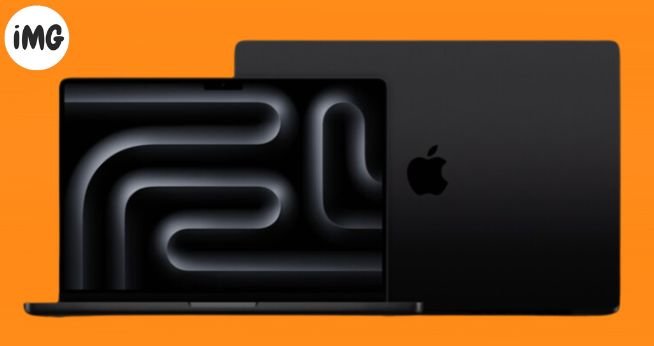
Regarding the screen, the 120Hz Liquid Retina XDR display with tiny bezels and a cutout at the top is still present in all MacBook Pro models, but it is still incompatible with Face ID. To Apple’s credit, though, while watching SDR video, the M3 models’ displays are 600 nits brighter than the M2 models’.
The new M3 MacBook Pros are essentially the same as their predecessors, if we ignore the addition of 600 nits of brightness, the new Space Black colorway, and the elimination of a connector on the right side.
Performance of CPU and GPU
The performance of the CPU and GPU is the primary difference between the M3 and M2 MacBook Pros. In comparison to Apple’s 5nm M2 series of processors, the M3 family of chips delivers substantially greater CPU and GPU performance with a much reduced power drain because of the new 3nm design.
Similar to the M2, the entry-level M3 processor featured in the base 14-inch MacBook Pro has an 8-core CPU with four performance and four efficiency cores in addition to a 10-core GPU. The M3 chip contains 25 billion transistors, compared to the M2 chip’s 20 billion, even if the number of cores hasn’t increased.
When it comes to the M3 Pro, things become a little more complicated. It has an 18-core GPU, slower Unified memory (50GB/s), and 37 billion transistors, compared to the M2 Pro’s 40 billion. Additionally, Apple switched out two of the M3 Pro’s performance cores for efficiency cores, even though we still got a better 12-core CPU.
As a result, the M3 Pro chipset has six performance and eight efficiency cores compared to the eight performance and four efficiency cores of the M2 Pro chipset from the previous year.
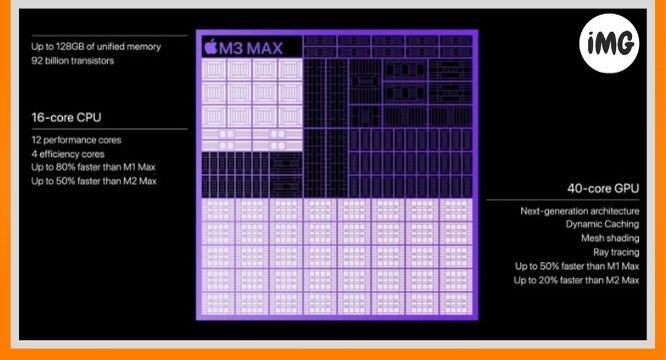
Fortunately, the M3 Max does not exhibit this behavior. Unlike the M2 Max, which has a 12-core CPU and a 38-core GPU, it provides up to a 16-core CPU and 40-core GPU. In addition, the former has 128 GB of unified memory and 98 billion transistors, compared to 96 GB and 67 billion transistors in the more recent model.
When compared to the M2 versions, the M3 MacBook Pros provide a significant improvement in the GPU sector, even if we ignore all of the CPU enhancements. The M3 MacBook Pro’s GPU now offers hardware-accelerated ray tracing for more realistic lighting in addition to a little boost in core count. Dynamic Caching is a new feature that lets the Mac assign extra RAM to the GPU based on the work at hand.
Connectivity and ports
Regarding ports, all 16- and 14-inch MacBook Pro models with the M3 Pro and M3 Max or the M2 Pro and M2 Max include three Thunderbolt 4 ports that enable Display port over USB-C. However, there are just two Thunderbolt 3/USB 4 connections on the 14-inch MacBook Pro with M3.
The M3 MacBook Pros may, as usual, be connected to external monitors. However, depending on the chip you choose and whether you’re utilizing the HDMI or Thunderbolt connector, the number of monitors and available resolution could be different.

Up to four external monitors may be supported by the M3 Max and M2 Max: three 6K 60Hz displays via Thunderbolt and one 4K 144Hz display via HDMI. In the meanwhile, it will take up to three screens: one 8K 60Hz or 4K 240Hz display via HDMI and two 6K 60Hz displays via Thunderbolt.
In the same manner, two external screens may be supported by both the M3 Pro and M2 Pro. This may be one 6K 60Hz Thunderbolt display combined with a second 4K 144Hz display over HDMI, or two 6K 60Hz monitors connected together. On the other hand, using a single 8K 60Hz or 4K 240Hz external monitor via HDMI is another option.
Last but not least, the 14-inch MacBook Pro with M3 chip is limited to supporting a single external monitor via HDMI at either 6K 60Hz or 4K 120Hz. This is a disappointing but typical limitation shared by the M2 and M1 CPUs on previous Mac models.
Battery life and charging
With the 96W and 140 W power bricks for the 14-inch and 16-inch versions, respectively, the M3 and M2 MacBook Pros enable quick charging, reaching 50% of the battery life in 30 minutes. Both models are quite power efficient. But compared to the M2 MacBook Pros, the M3 MacBook Pros may give an even better screen on time because of the state-of-the-art 3nm design.
On a single charge, the 14-inch M3 MacBook Pro, the entry-level model, can play videos for 22 hours. The new model replaces the 13-inch M2 MacBook Pro with TouchBar, which has comparable specs but lasts 17 hours on a single charge.
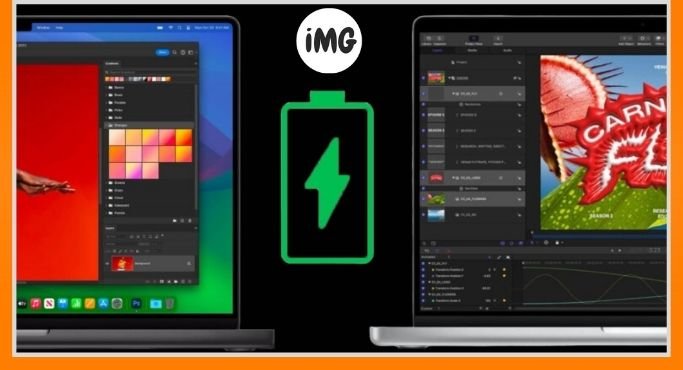
In particular, although 18 hours of video playback on a single charge is now possible with the higher-end 14-inch MacBook Pro with the M3 Pro and M3 Max, up from 17 hours with the M2 Pro or M2 Max MacBook Pro.
Similarly, 22 hours of video playing on a single charge is now possible with the 16-inch MacBook Pro with M3 Pro and M3 Max, up from 21 hours with the M2 Pro and Max.
| Model | Remote web battery | Video playback | Included power connector | Battery limit |
|---|---|---|---|---|
| 14″ M3 MBP | 15 hours | 22 hours | 70W or 96W | 70Wh |
| 14″ M3 Pro or Max MBP | 12 hours | 18 hours | 70W or 96W | 70Wh |
| 14″ M2 Pro or Max MBP | 11 hours | 17 hours | 67W or 96W | 70Wh |
| 16″ M3 Pro or Max MBP | 15 hours | 22 hours | 140W | 100Wh |
| 16″ M2 Pro or Max MBP | 14 hours | 21 hours | 140W | 100Wh |
MacBook Pro M3 vs. M2: Cost and Availability
On November 7, the 14-inch and 16-inch M3 MacBook Pros are scheduled to go on sale.
| Model | Price (starts at) |
| 14-inch M2 Pro MacBook Pro | $1,999 |
| 16-inch M2 Max MacBook Pro | $2,499 |
| 14-inch M3 MacBook Pro | $1,599 |
| 16-inch M2 MacBook Pro | $2,499 |
- The beginning cost for the 14-inch M3 Expert model is $1,999, while the M3 Max variation is $3,199.
- Meanwhile, the M3 Max model starts at $3,499, and the 16-inch M3 Master model starts at $2,499 as well.
- Finally, beginning at $1,599 is the 14-inch M3 model, which replaces the 13-inch MacBook Genius M2.
Apple no longer sells the 14- and 16-inch M3 MacBook Pros on its website, even if the M2 versions are still the same price. Therefore, you will need to rely on independent shops if you want to buy the older versions.
M3 vs M3 M2 MacBook Pro – Which one should I choose?
It’s important to take the planned usage and budget into account while deciding between the M3 MacBook Pro and the M2 MacBook Pro. If you’re coming from an M1 or Intel-based MacBook Pro, the M3 MacBook Pro is a strong alternative.
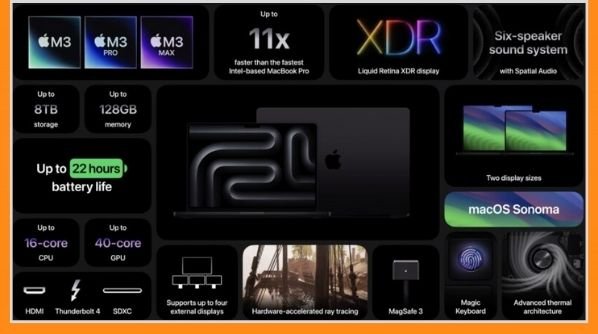
With a longer battery life, the M3 MacBook Pro is a better choice for performing demanding activities like video editing and 3D rendering due to its significant improvements in CPU and GPU performance.
But if you already have an M2 MacBook Pro, the M3 MacBook Pro might not provide a significant speed boost, so the M2 is a far better option if you’re on a tight budget or need to handle fewer tasks.
Though a little slower, I think the M2 MacBook Pros can still manage practically any demanding work. In addition, when the updated model becomes more generally accessible, the price of the M2 MacBook Pro is probably going to decrease.
